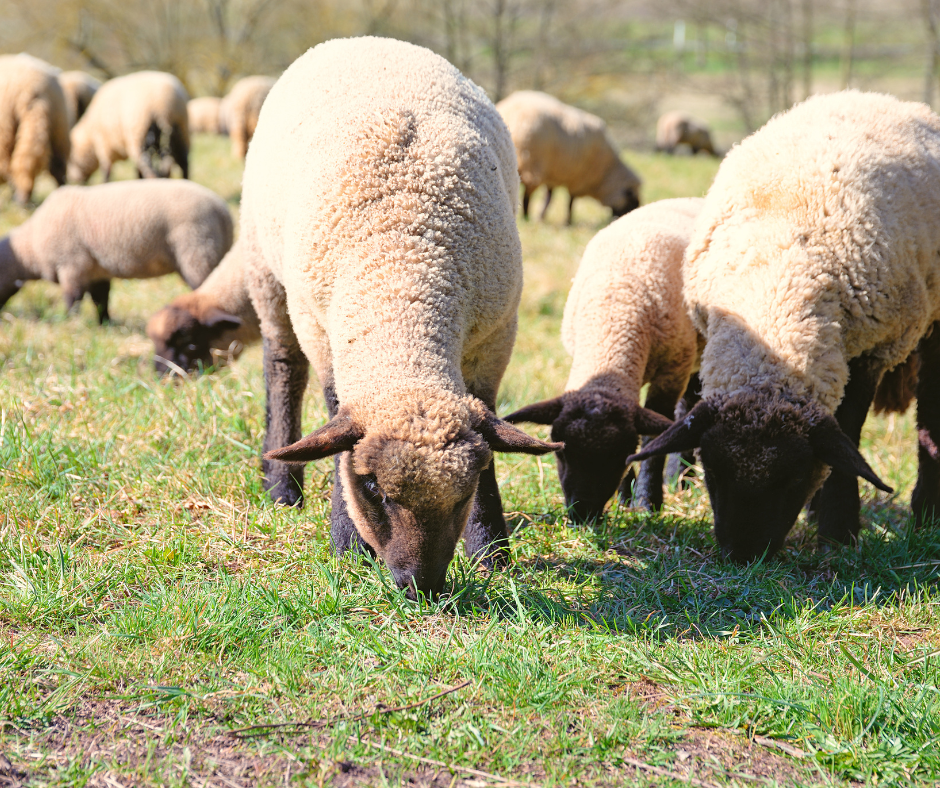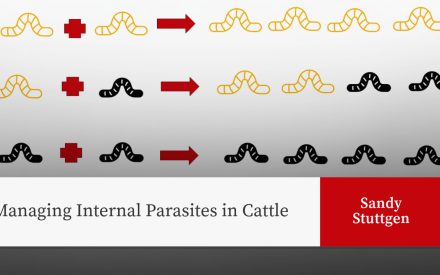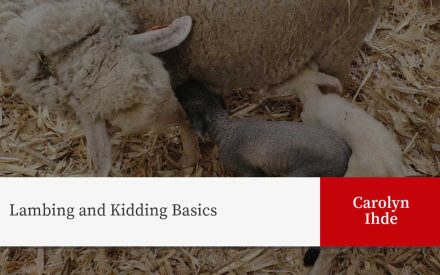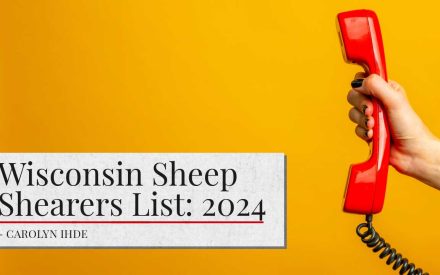This article was originally published in the Wisconsin State Farmer
Understanding the relationship between forages, sheep, and parasitic stomach worms (helminths) is the first step in creating a management strategy to increase animal production and decrease anthelmintic resistance (AR). The two environments necessary for the worms to complete their lifecycle are the host animal and the growing pasture.

The lifecycle of parasitic stomach worms
Lifecycles of stomach worm species follow a similar pattern; an infected sheep passes eggs in fecal matter onto pastures. The eggs hatch into the larval stage and develop through the L1, L2, and L3 stages by feeding on bacteria in the manure. The L3 “infective larval stage” moves from the manure onto pasture plants via moisture from rain and dew. L3 larvae tend to be located below 4-6 inches on the plant; managing grazing with residual plant height no shorter than four inches helps reduce the infection of the host animal. Once the larvae inhabit the animal host, it matures into an adult. They begin to feed, reproduce, and lay eggs continuing the cycle. Finding ways to disrupt the lifecycle is a beneficial tool in combating infestations and losses due to parasite loads.
There are two ways parasites populate pastures in the spring and thus infect sheep, over-wintered larvae from the previous fall’s grazing and eggs in fresh manure from larvae that have gone through hypobiosis (a period of suspended development) in the sheep’s body during the winter months. When the temperatures warm, the larvae become active and begin egg production. For spring lambing flocks, the ewe’s natural resistance to parasites wanes during late gestation and early lactation, which coincides with larvae exiting hypobiosis.
Use Fecal Egg Counts to measure baseline parasite load
Before spring turnout, complete a fecal egg count (FEC) to measure the baseline parasite load. The FEC will inform the producer and veterinarian of the parasite load before administering any strategy or anthelmintic (dewormer). The baseline analysis can gauge the effectiveness of anthelmintics or other strategies with FECs taken during the grazing season.
Manage grazing to reduce infection of host animals
Delayed grazing is one strategy that relies on understanding the overwintering capacity of larvae and the pre-turn-out FEC. Since L3 infective larvae do not feed, they will die in the environment if a suitable host animal does not ingest them before their energy reserves are used. Most L3 will die within three to six months. (However, some species may survive in the environment with ideal conditions for up to a year.) Delaying spring turn-out will increase the L3 larvae energy use and decrease the amount of viable L3 larvae ingested. Waiting for spring turnout may not be ideal for maintaining pasture plants in a vegetative state for optimum nutrition and palatability. Therefore, rotating fields harvested for hay and early grazing based on when they were grazed the previous year can help reduce early-season parasite loading. In turn, grazing on hay ground will ensure sheep are not ingesting a new parasite load if the preturn-out FEC is determined to be in an acceptable range.
Anthelmintic resistance: A concern for parasite control
Anthelmintic-resistant (AR) parasites are a concern. When populations become resistant to the available dewormers, producers will not have anthelmintics to help control parasite production losses. Use a combination of anthelmintic products with a refugia (nonexposed) population and FEC. Conduct an FEC when pastures begin to green up to determine the baseline parasite load. Pasture green-up indicates that parasites are ending hypobiosis and are also beginning to move from manure onto the grass. If it is determined a product should be used, administer the anthelmintic to susceptible sheep (lambs, young ewes, thin and anemic sheep). To build refugia, do not deworm older ewes in good condition and that do not show signs and symptoms of a parasite burden. A refugium aids in preventing an AR population from forming by sharing non-resistant genes with resistant parasites during parasite reproduction to create populations susceptible to anthelmintics.
Whether the operation’s goal is to grow meat, milk, fiber, or any combination of these products, the impact of parasites needs to be reduced. Grazing sheep is not a “one size fits all” system; each operation can look at the available resources and challenges to create a plan that will work in the constraints of the operation to reduce anthelmintic resistance.
Resources
Almeida, F. A., Albuquerque, A. C. A., Bassetto, C. C., Starling, R. Z., Lins, J. G. G., & Amarante, A. F. (2020). Long spelling periods are required for pasture to become free of contamination by infective larvae of Haemonchus contortus in a humid subtropical climate of São Paulo state, Brazil. Veterinary parasitology, 279, 109060.
Charlier, J., Bartley, D. J., Sotiraki, S., Martinez-Valladares, M., Claerebout, E., von Samson-Himmelstjerna, G., … & Rinaldi, L. (2022). Anthelmintic resistance in ruminants: Challenges and solutions. Adv. Parasitol, 115, 171-227.
Högberg, N., Hessle, A., Lidfors, L., Enweji, N., & Höglund, J. (2021). Nematode parasitism affects lying time and overall activity patterns in lambs following pasture exposure around weaning. Veterinary Parasitology, 296, 109500.
Torres-Acosta, J. F. J., & Hoste, H. (2008). Alternative or improved methods to limit gastro-intestinal parasitism in grazing sheep and goats. Small Ruminant Research, 77(2-3), 159-173.
Shulaw, P., Lewandowski, R., McCutcheon, J., Foster, J.G. (2012). Strategies for Coping with Parasite Larvae on Pastures in the Springtime in Ohio. https://ohioline.osu.edu/factsheet/VME-28

 Managing Internal Parasites in Cattle
Managing Internal Parasites in Cattle Lambing and Kidding Basics
Lambing and Kidding Basics Wisconsin Sheep Shearers List: 2024
Wisconsin Sheep Shearers List: 2024 Preliminary forage recommendations for grazing solar sites
Preliminary forage recommendations for grazing solar sites


